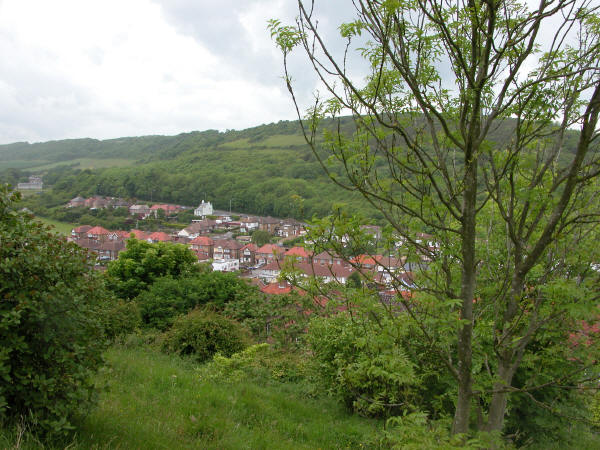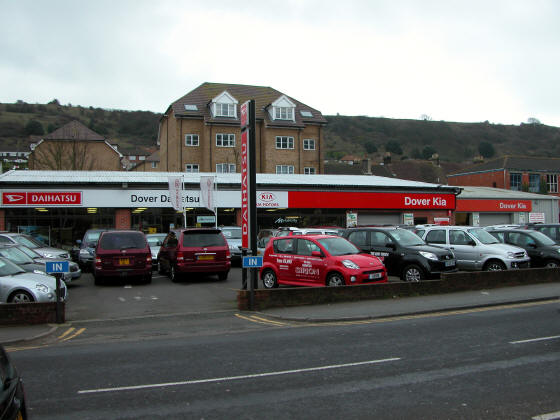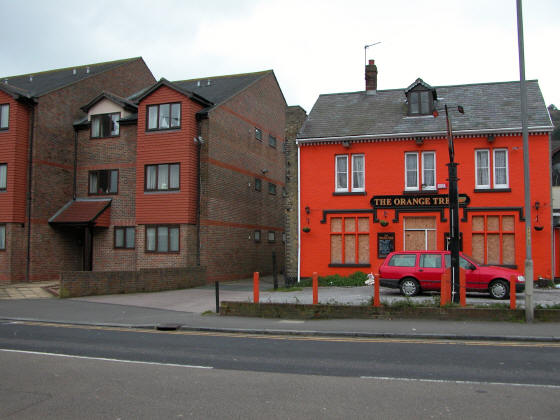| Dover Index |
|
Maxton
|
|
|
| |

Maxton from the Western Heights
|
| |
"Maxton Court was one of the ancient Manors of
Hougham. The ownership of the Maxton Manor can be traced from the
time of Henry III., when it was held by Sir Stephen Manekyn, for
knight's service in the defence of Dover Castle. Manekyn's
daughter Alice alienated it to William Archer, who, at that time, was
the chief of the twenty-one Dover master mariners, who provided the
twenty-one ships for the King's service, and for working the monopoly of
the passage between Dover and Calais. His son William passed the
estate to John Alkham, of Alkham, whose descendants held it until the
close of the reign of Edward IV., when it passed to Roger Appleton; and
after his day it was held in succession by the Hobdays, the Harmans, the
Hales, and, ultimately, it went to the Andrews family, one of whom was
Mayor in the reign of Elizabeth. the Andrews sold it to the
Peppers, who held it till the reign of James I., and then sold it to Sit
Thomas Wilford, of Ilden. In the reign of Charles I. it passed to
the Richards, of Dover, and from the Richards it passed to John Sladden,
merchant adventurer, of Dover, and it was carried by his daughter Mary,
in marriage, to Mr. Thomas Fogge, of Dover. The Fogges, in due
course, sold it, and in 1783 it was owned by Mr. Thomas Bigg, Inland
Revenue officer, of Dover, who resided there, and improved the mansion.
In the early part of the 19th century, it was the residence of the
Worthingtons, of Dover, and it is still known as the Manor House, and
situate on the main road, just beyond the tram terminus."
(JBJ 1907)
|
| |
I can remember the manor house as a ruin, with just the
lower walls and the steps that once led to the front door still standing;
we used to play among the ruins as children in the 1950s.
There was a low wall fronting the Folkestone Road, with
an entrance at each end of a curved driveway and trees along the inside of
the wall. There are few clues left today to show where the house
stood. The picture below shows the site today. |
| |

|
| |
"About the year 1864, the land on the eastern side
of the road at Maxton was aquired by the Freehold Land Company. It
was divided into plots, and traversed by roads, two across, parallel
with the main road, and two roads passing upwards to the boundary of the
Government land of the Western Heights. Building plots were taken
up by a few enthusiasts, but it was too far out at that time, to attract
many residents. In 1867 there were but sixteen houses on this new
estate, and twenty years later, in 1887, there had been but twenty more
added. Now the estate is practically filled up, having over 130
houses, without counting those on the new estate, on the western side of
the main road." (JBJ 1907)
|
| |
The roads referred to by Bavington Jones in the above
description would be Churchill Road and Hardwicke Road running parallel to
the Folkestone Road, with Shakespeare Road and Maxton Road running up the
hillside.
The tram terminus referred to by Bavington Jones stood
adjacent to the Orange Tree public house. For many years the depot
for the Council refuse collection and street cleaning departments, it was
demolished, along with an adjacent house, in the 1970s, to make way for
yet another block of flats. A similar fate awaits the pub if nobody
comes forward to save it.

At the junction of Shakespeare Road and Folkestone
Road, backing onto Churchill Road, was a large mansion which, until its
demolition in the 1970s, housed a factory making high-class shirts.
"The first house next Dover, now called Maxton
House, but originally Churchill House, is a considerable mansion, and it
has some literary associations. Its first occupier, Mr. Edward
Foss, about the year 1865, rendered assistance to Mr. John Bruce in
compiling the interesting memoir of the poet William Cooper, which
appeared in Messrs. Bell and Daldy's Aldine Edition. The next
occupant was Major W. Augustus Munn, F.R.H.S., who, for 35 years, was a
co-worker with Dr. Edward Bevan in studying the habits of the honey-bee;
and having survived Dr. Bevan, and acquired the copyright of his
standard book on that subject*, Major Munn, in the year 1870, when
residing at Maxton, published an enlarged and illustrated edition** of
that work, which is still regarded as a standard book of reference on
that fascinating subject." (JBJ 1907)
|
|
* The
Honey-Bee; Its Natural History, Physiology and Management, by Edward
Bevan, M.D, published in London by Baldwin, Cradock, and Joy, 1827
** Revised
edition, by William Augustus Munn, published in London by John Van Voorst,
1870
|
| |
(Awaiting Picture)
|


